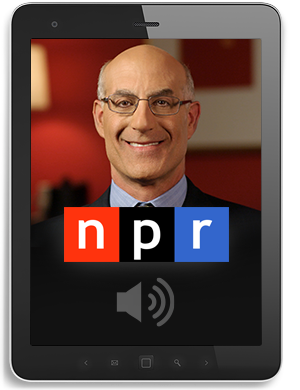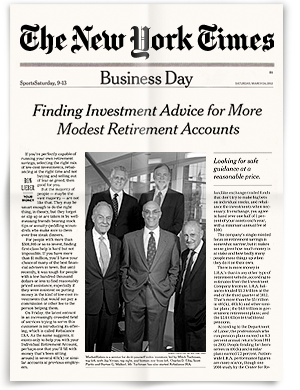Retirement: 5 tips on how to save $1 million
Rebalance’s Managing Director Scott Puritz discusses the powers of compounding and portfolio indexing, and how the stock market can be your friend if you just stay in it for the long haul.
One million bucks is a lot of money. It certainly is impressive if you’re one of the few who has saved that much for retirement — looking at your statement and seeing all those zeros.
And even financial planners who say you might need more for your retirement can’t argue that it is an impressive start. After all, people are living longer; you may have unanticipated health care costs; and you really want to maintain that standard of living you are accustomed to.
So, here are five tips for saving a cool million by the time you retire.
1. Start early and take advantage of the power of compounding. This may cause many Baby Boomers to sigh and think about what could have been. “The less time you have, the more you have to save,” says Chris Chaney, vice president at Fort Pitt Capital Group in Pittsburgh. Compound interest and earnings are your best friend as a long-term saver. If you start late, you’ve lost that. “You are trying to make up for what time has not done,” Chaney says. “You have to save a lot more.”
“It’s a very achievable goal,” says Scott Puritz, managing director at Rebalance.
“Get the power of compounding working in your favor. As Einstein said, it’s a law of nature,” Puritz says. “People in their 20s and 30s tend not to think about retirement. They are busy thinking about college loans and families. But it’s the best time because of compounding. Start early and harness benefits of long-term compounding.”
“As a retirement investor, if you are able to achieve a return of 7.2% per year, your money will double every 10 years,” he says. “It’s really quite amazing. Every dollar you invest at 25 will grow to $16 when you retire. It’s quite compelling.”
2. Have a plan, says Bob Gavlak, financial adviser with Strategic Wealth Partners in Independence, Ohio. “You will not get there by accident.”
“Whether you develop that plan on your own, or with an adviser, that’s fine,” he says. “But having a plan and a strategy for moving forward is the most important first step. Ultimately, what that will help to avoid is emotional investing, and that is one of downfalls of average investors,” Gavlak says. “People put more money in when the market is going up, and sell when the market is going down. You don’t focus on short-term fluctuation, but rather on that long-term plan.”
3. Take advantage of your company-sponsored savings plan. The 2014 Wells Fargo Middle Class Retirement Study found that a third of middle-class Americans are not saving in a retirement account. One in five have no savings at all. But, among survey respondents with access to a 401(k), the median amount saved is 10 times more than someone without access.
“First, it will give you tax savings,” says Gavlak. “A lot of times you get some sort of employer match. You get free money to help build towards that goal. That will be huge help.”
Jeanne Thompson, vice president at Fidelity Investments, says people being in 401(k)s for an extended period has also helped boost the number of Fidelity customers who are millionaires. That number has doubled in the past two years — from 34,900 to 72,000, she says. “The population is getting older. People have been in their 401(k) plans longer. For many people who don’t have pensions, this is the primary source of income.”
She says 90% of the Fidelity millionaires are taking advantage of the catch-up provisions and many are saving up to the maximum. “They are milking it for all it’s worth.”
4. Use automatic deductions for all your savings. “You don’t have to think about it,” says Gavlak. “Do it as much as you can, within your budget, so you don’t have to think about it. Take as many auto deductions as you can, so you don’t get caught up in a situation where, instead of saving, you just spend it.”
“I encourage people to have systematic plans where the money comes out of checking, whether it’s once a week or once a month, or even if it’s a dollar,” says Andrew Ireland, head of U.S. wealth management at HSBC. “There is no shortcut. It’s no different from trying to get into shape. It’s diet and exercise. Set out a defined approach. And then check to see if your approach is meeting your stated objectives and goals.”
5. The stock market is your friend. “You won’t get there just on savings alone,” says Thompson. “It does take some market action.”
“Don’t try to beat the market, but be in the market,” says Puritz. “We are firm believers in the power of portfolio indexing as opposed to attempts to beat the market, which is a losers’ game. It’s simple for the average investor to invest in a portfolio of low-cost index funds. You will do better than 90% of people.”
And be in the market for the long haul, says Thompson. “We recommend you save at least eight times your income. It could be more like 10 (times your income). The earlier you want to retire, the more you need to save. If you want to retire in your early to mid-60s, it might be 10 or 12 times your income. If you retire later, the number is eight times your income. Then your time in retirement is shorter, and your Social Security benefits may be larger.”






